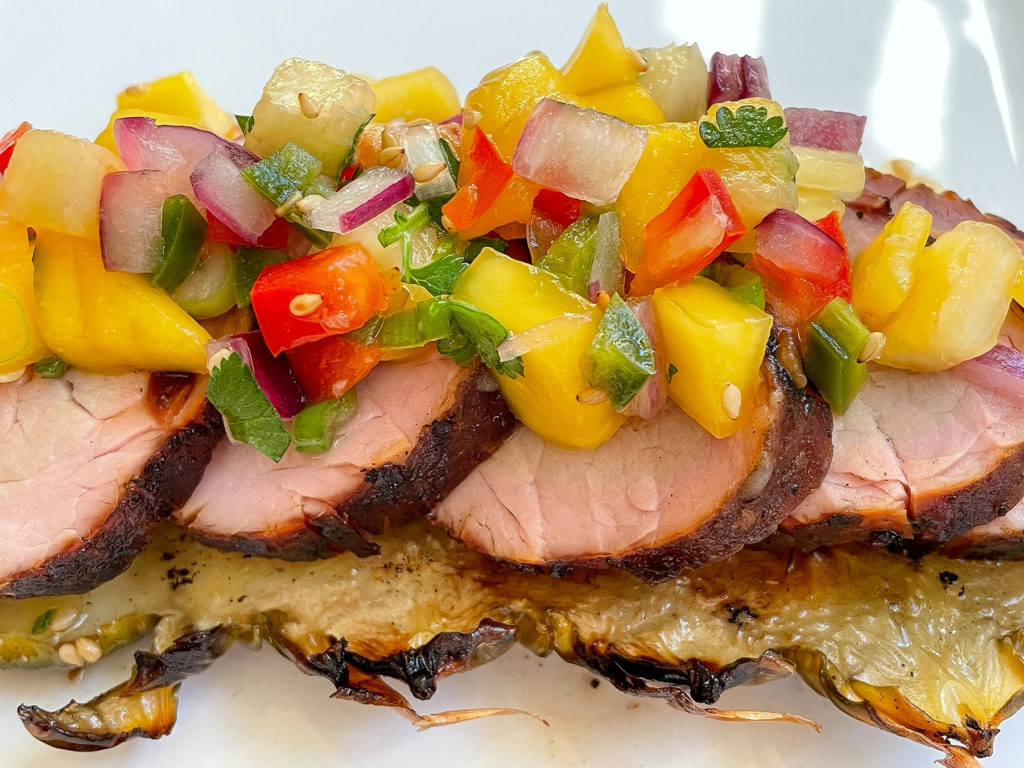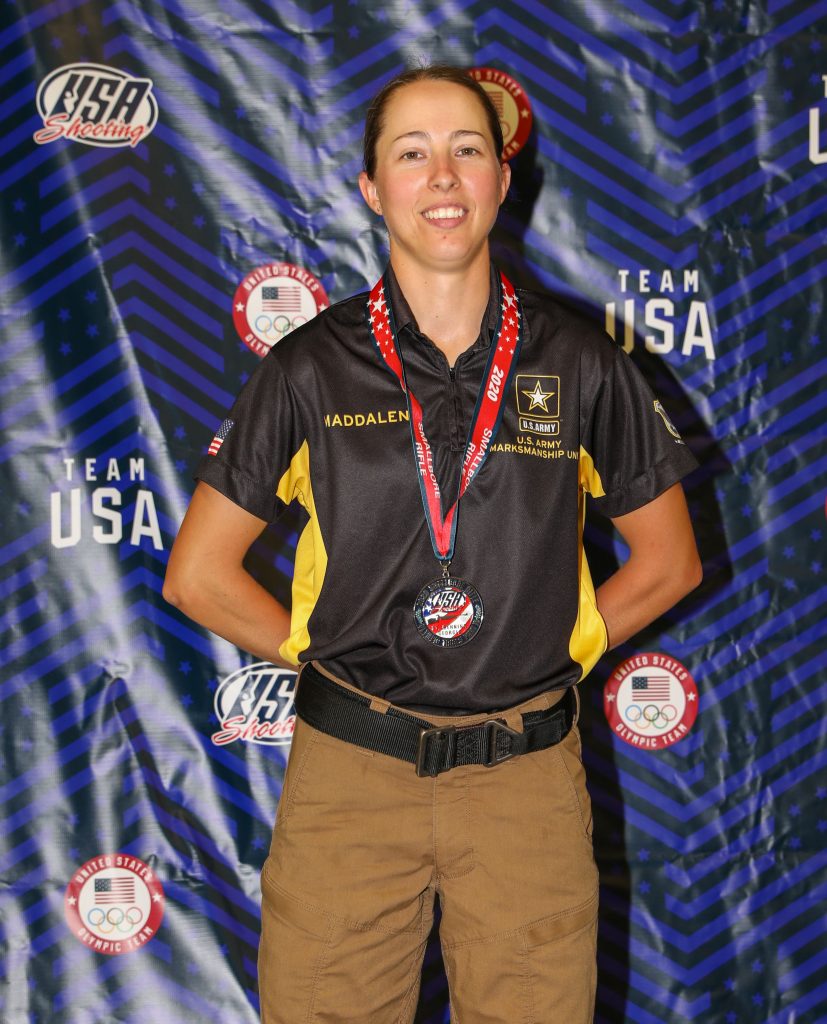Thanks For 2021 Memories: Our Favorite CS Stories
Happy New Year! At least we can say that at 12:01 a.m. tonight. Until then, here are some of California Sportsman’s favorite stories of the year that appeared in the magazine:
JANUARY: AN ILL HUNTER’S WISH FULFILLED
(PHOTO COURTESY OF DONN WALGAMUTH)
By the time they got the pig field-dressed and hanging in a cool place, the bedded bucks were gone. “I was really beginning to worry because the conditions were very hot and deer just weren’t moving in daylight,” Donn recalls.
“Then, the following morning, we all said a prayer to help find Jayden a buck, and at daylight we found it. It was a monster, and it was bedded beneath a single oak tree on a rolling hillside. The crew made a stalk and got Jayden within comfortable shooting range, setting him up in a prone position. (He was) rock-solid with shooting bags and a bipod rest.”
For two hours they remained there and waited for the buck to stand and present a shot.
“Jayden felt really confident,” Donn says. “He dry-fired the gun several times and was very calm and collected, but excited. During that time we whispered, laughed and shared stories. He asked how I got into hunting, and I shared the story of the man who took me when I was young, as I, like Jayden, didn’t have anyone in my family who hunted. Jayden was enthralled by the story, and at the end, asked where the man was. ‘Well, he passed away due to cancer, and now he’s with Jesus,’ I said. ‘He’s with God, too!’”
It was a surreal moment, one where the hunt became secondary to sharing life stories. When the buck finally stood, Jayden made a perfect shot. And yes, the deer was a monster. It was one Perry Cremeans had spent two months guiding other hunters for.
“I truly believe that God somehow picks people with the best character in the world to go through these trials and tribulations,” says Donn about Jayden’s battle with cancer. “This kid is sick, real sick, yet he wanted to jump out of the ATV and open every gate. He was always commenting on how beautiful the land was and how much he enjoyed seeing the cows on the ranch we hunted. When my wife joined us for a hunt one day, he hopped out of the front seat and got in the back, offering his seat to her. For a 12-year-old to be that aware and kind-hearted is amazing, especially in his situation.”
“And not once did he complain, fall asleep or look at his phone. He enjoyed every moment in nature, and (cherished it) with the people who surrounded him. He never showed sadness or weakness, and appreciated every moment. The time we spent together, hunting, was so peaceful.”
-Scott Haugen
Editor’s note: In July, Jayden Oakes passed away at the age of 13.
FEBRUARY: BEAR BOOK EXCERPT REMEMBERS CALIFORNIA URSINE LEGEND
There are other, mostly forgotten, bear men who fill the history of the West. Two things set Adams apart from his peers. First, Adams would capture cubs after he killed their mothers, and with a firm hand and deep knowledge of animal psychology, he turned several of these orphans into servants and even friends.
He’d use the bears as pack animals to carry hides of other animals, often grizzlies. He’d hunt with them – at one point a bear he named Benjamin Franklin saved him by fighting off a mother grizzly he had wounded. After a few years of roaming, as civilization turned places like San Francisco from camps into bustling cities, he took on the moniker Grizzly Adams and cashed in on the menagerie business with his captive grizzlies as the star attractions.
Second, in 1859 Theodore H. Hittell, a San Francisco journalist fascinated by Adams, spent an extensive amount of time interviewing the mountain/ circus man and writing a book about his adventures. That same year, Adams – sensing he was dying and perhaps missing his family – loaded a ship full of his grizzlies and other beasts and, like a modern Noah, set sail for the East Coast.
When he arrived in New York City, he was greeted by thousands of curious spectators. He rode a brown bear through the streets. Following behind him, horses pulled wagons of dozens of caged grizzlies and other wild animals from the West. He dismounted in front of a giant canvas tent that P. T. Barnum, “the greatest showman that ever lived,” had set up in advance. For the price of an admission ticket, any New Yorker could look into the eyes of a brown bear, hear stories of the West and watch Adams wrestle his bears.
-Bjorn Dihle, excerpted from his book, A Shape in the Dark: Living and Dying with Brown Bears
MARCH: A TROUT FARM’S ASSIST GIVES SALMON A BOOST
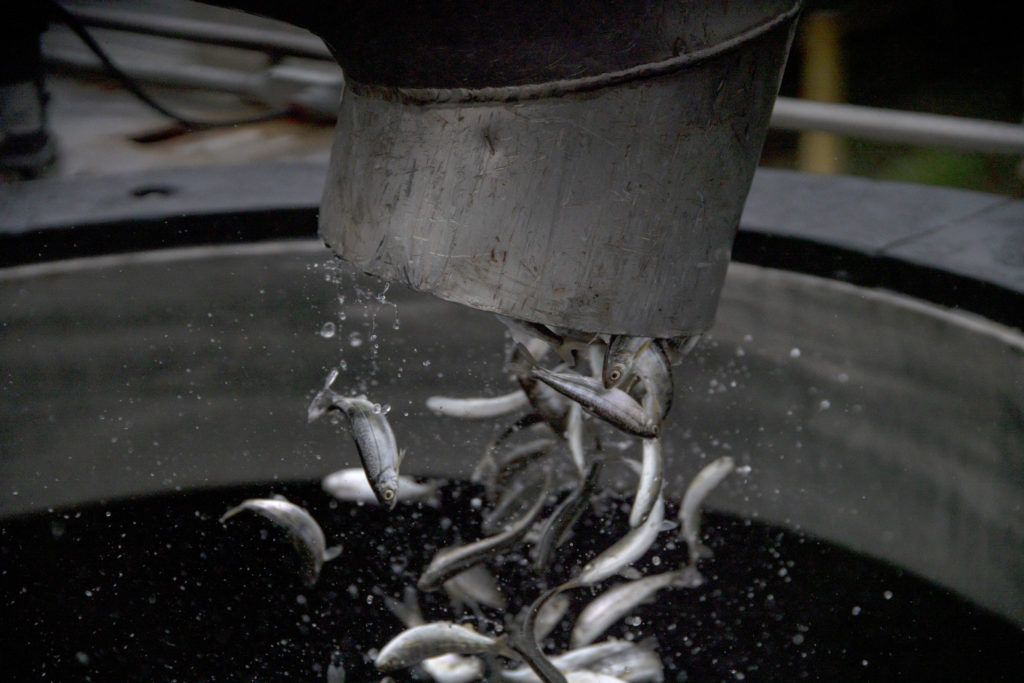
This year 40,000 winter Chinook are being raised at the farm, with 120,000 more reared at Coleman. Brett Galyean, project leader at Coleman, communicates often with Mackey and Harris to discuss the growth, care and feeding of the fish at both facilities.
“Katie, Phil and the staff at the Mt.Lassen Trout Farm have done a great job observing and learning the subtle differences in rearing and feeding winter Chinook salmon than other salmonids,” said Galyean.
The fish from both the farm and Coleman will be released together into North Fork Battle Creek in the spring of 2021. Using a combination of cod- ed-wire tags and acoustic tags, biologists will monitor the two groups of fish after release. The acoustic tags allow for real-time tracking of fish when they are released into the creek and coded-wire tags will be used for long-term monitoring of fish when they are captured as adults. This information will be used to help biologists compare the survival and, eventual, spawning success of the two groups.
This new approach to tackling conservation’s challenges has brought about a partnership between unlikely partners.
“I have appreciated the mutual respect between everyone involved with this project,” Harris said. “The collaboration and support we have received from all of the agencies involved has been tremendous.”
-Laura Mahoney, U.S. Fish and Wildlife Service
APRIL: CHASING TASTY CALIFORNIA HALIBUT
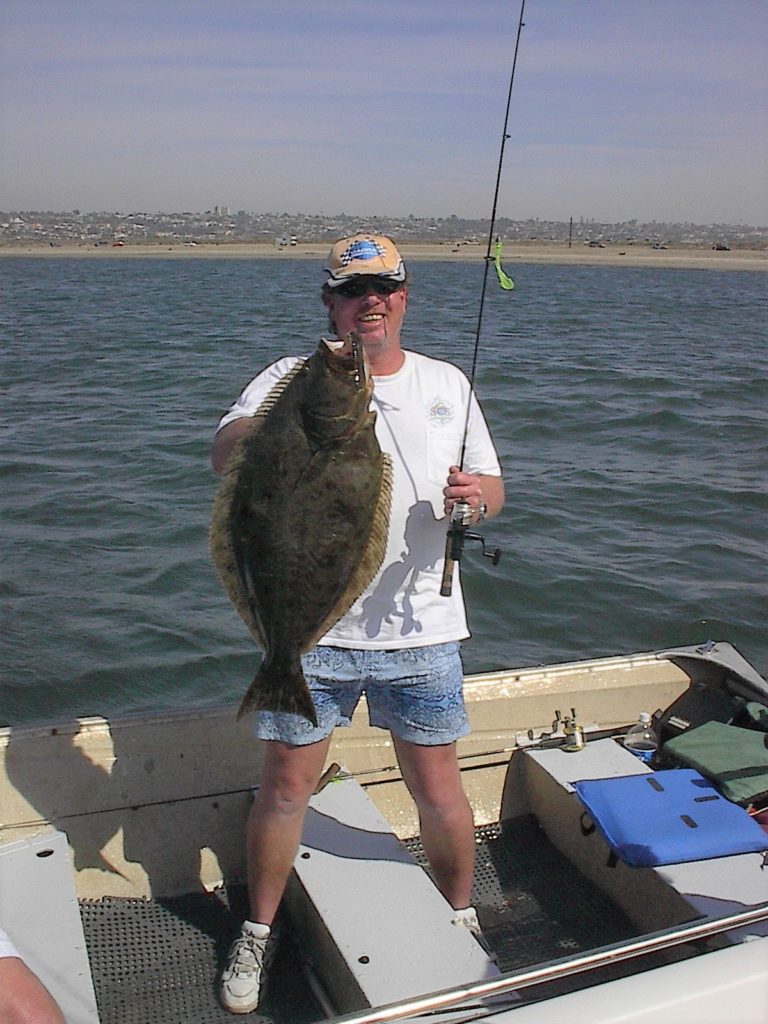
The great thing about halibut this time of year is the fact that they can be chased by so many different anglers: surf fishermen, float tubers and kayak anglers; plus all boaters, from private to sport boats.
Most of us don’t realize that halibut are a schooling fish that gather together in large numbers during the spawn. That is why when fishing them during this time of the season, you’ll often catch many in one small area. If you catch one or two, don’t give up on that area; give the others a chance to bite. You may get a big one to hit your lure or bait, and it’s not unusual to bring one up with another following it, like other fish will do.
Since there are so many ways to fish for halibut – and that’s a good thing – it should help any angler who hasn’t really targeted them before adapt. You can even just go fishing for bass and take the bonus halibut since there are many more than usual in the water.
-Bill Schaefer
MAY: A SPORTSMAN, DOCTOR AND WAR HERO’S JOURNEY
Jamie and I hop in the back of a Humvee, and our convoy heads out at 8 a.m. It’s already getting hot, at least 90 degrees, and I suspect we’re in for a long day of travel. Per protocol, we stop just outside the gate, exit the vehicles, and load our weapons. Facing away from the Humvee, I insert a clip into my 9mm pistol, pull back and release the slide, chambering one round. I flick the safety up and I’m ready to go. The convoy lurches forward together, turning west onto the main highway for a short distance, then exiting on an unmarked dirt road I only half-recognize from a previous convoy. Our routes constantly change, using back roads and making our own paths to avoid predictability, ambushes, and IED attacks. I tuck a bit of chewing tobacco in my lower lip for the road trip and peer out the window at the barren desert terrain that distracts me from our destination. Before Iraq, this habit was something I reserved for hunting trips and “male bonding” with my brothers; Iraq brought back the indulgence, since nearly every other marine carries
chewing tobacco in his front pocket. We bump along the dusty roads, passing muddy, sewage-filled canals. Three weeks ago, one of our Marines drowned in this canal. While swimming across to span an electrical conduit, his feet became entangled in weeds and rescue attempts failed. On dirt roads, we travel through miles of crops and fields inhabited by the occasional farmer. Small farm towns punctuate the long stretches, most of them poorly constructed clay huts or rock structures, with dirt-caked walls. Children run in the streets, waving to us as we thunder by. I marvel at their acclimation to the war all around them and the fragility of their daily life. Marines wave back, throwing soccer balls and other trinkets brought just for this occasion.
-Dr. Donnelly Wilkes, excerpted from his book Code Red Fallujah: A Doctor‘s Memoir at War
MAY: THE WOMEN PROTECTING CALIFORNIA’S FISHERIES
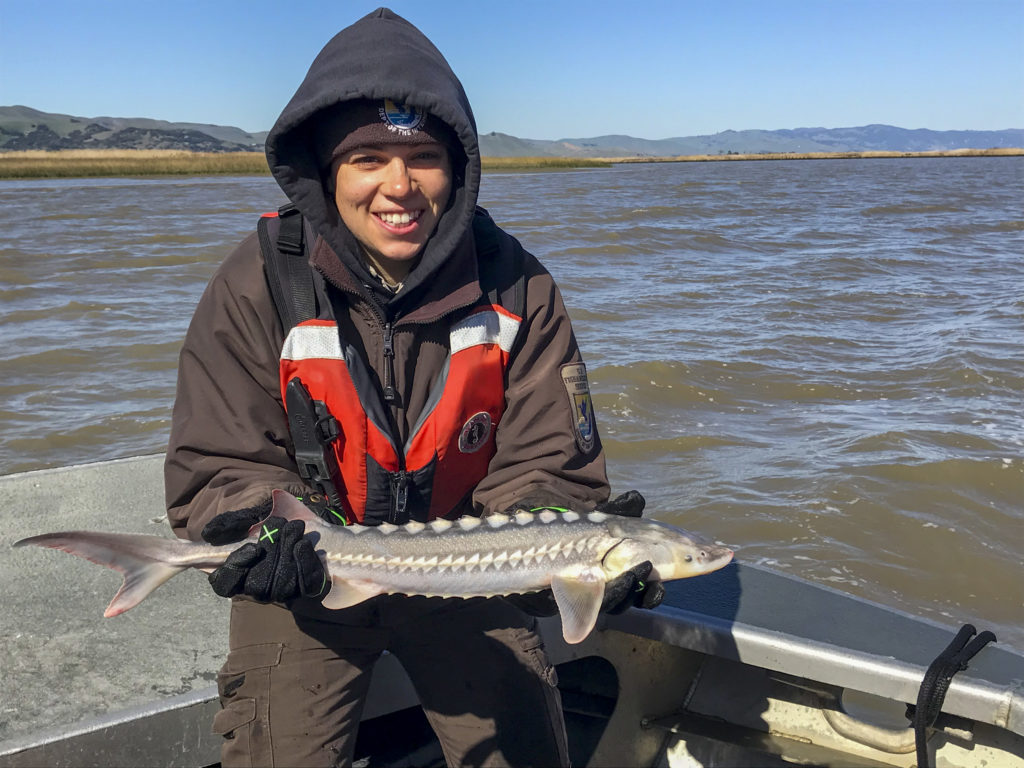
About 15 years ago, at a wetland science conference, Vanessa Tobias presented early results from her Ph.D. research into the leaf-tissue chemistry of wetland grasses. Tobias’ data, displayed on a poster next to her as she took questions in a conference hall, identified markers that could help land managers diagnose and address the causes of wetland loss.
“A guy came up and asked me where I got the data,” she recalled, “and I was really confused, and responded, ‘What do you mean? I collected it.’”
Tobias had taken soil samples, measured environmental variables, and built and installed elevated planters called marsh organs at sites across the Louisiana coast — all normal activities for a scientist in her field.
“I didn’t know how to answer him at first, but through talking to him, I realized he didn’t think women could do field work,” she said. “In my field, wetland science, there appears to be more women than men now, so it was really interesting to be at a wetland conference and have someone question, ‘You do field work?’ … But that attitude still exists today.”
-Brandon Honig, USFWS
JUNE: WHY PIG HUNTING IS BOOMING IN CALIFORNIA
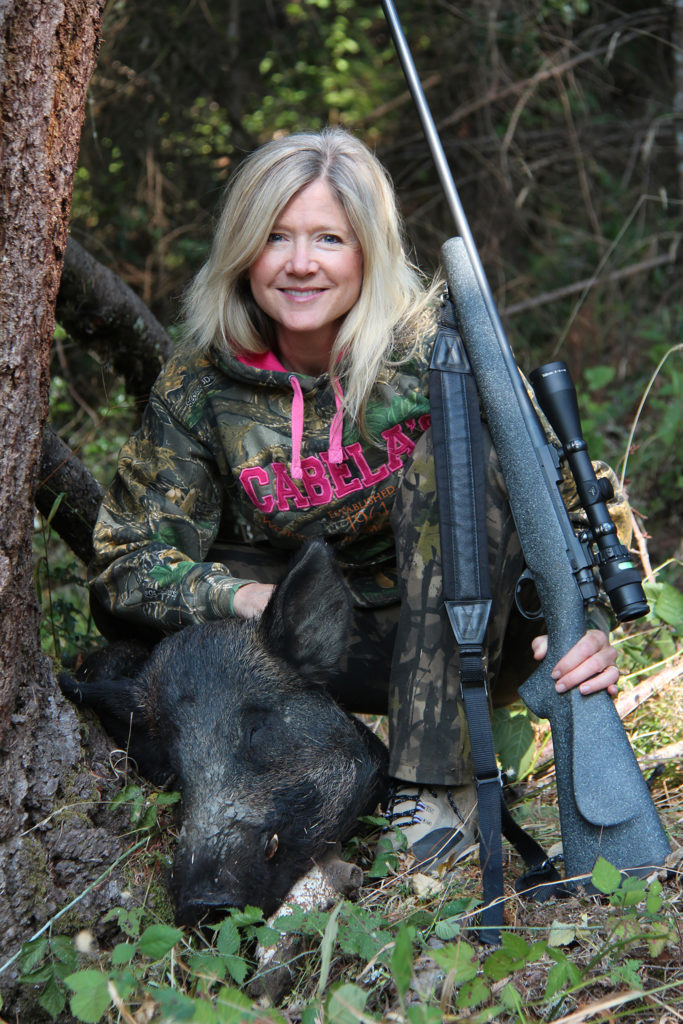
Summer pig hunts are hugely popular these days,” shared my longtime friend and Redding-based guide Parrey Cremeans (justforhunting.com). “I think this is for two reasons. First, with travel restrictions due to the pandemic, people want to get out, and they know finding wild pigs on California’s public lands is not near what it used to be like. And second, I hear more and more from hunters how they want to learn how to hunt big game, and that pigs would be a great place to start.”
Cremeans is right on both counts. I’ve hunted wild pigs in six countries, and I rank California’s hog hunts among the best of the best. These pigs largely occupy private land, meaning access is easy and there are a lot of them, which equates to a high number of sightings and shot opportunities. The evening prior to my taking that sow, we saw over 100 hogs, which is fairly normal on the lands Cremeans hunts.
If you want to learn how to hunt big game, you’re not going to find a better animal to start with than wild hogs. “Summer hog hunts are really nice because of our situation,” Cremeans says. “The ranch lands we hunt are flood-irrigated, and the plentiful supply of water draws in pigs from many miles away this time of year. These pigs are easy to pattern in the summer due to the extreme heat, also. They like being in shade and must have water, meaning it’s easier to predict their movements as they move between bedding and feeding areas.”
-Scott and Tiffany Haugen
Photos courtesy of Michelle Lunato/U.S. Army (top) and Sagen Maddalena
The Olympic Games tell us so much about an athlete’s character – from Jesse Owens, the sprinter who stuck it to Adolph Hitler’s white supremacy rhetoric during the 1936 games in Berlin; to unlikely wrestling gold medalist Rulon Gardner; to the sheer dominance of gymnastics star Simone Biles.
Maddalena may or may not join that select group as American gold medal heroes, but she found humor when asked about how quickly she caught onto shooting given how far she’s progressed since.
“Not at all. Terrible,” was how she described her performance early on. “One thing that still sticks in my mind is the (4-H) instructor we had running the .22 program told everybody in the group in our lesson before we went to the range – and he was talking to me – was, to be able to shoot standing, you have to love standing. So I pretty much told myself from that time on, ‘I love shooting standing.’”
So she made sacrifices to get better. Between her practice time on the range and livestock duties, Maddalena admits she had little time to do what kids her age do and hang out with friends. She also credits her mom, Susan, for attending all those county fairs: “I’m pretty sure there were better things to do at that time,” Sagen says. “She sacrificed a lot to be there.”…
-Chris Cocoles
OCTOBER: YELLOWTAIL FISHING IN JAPAN

On the fishing grounds, two boats are already anchored up and there are another four or so on their way behind us. I put my now mostly defrosted shrimp and squid into a small bucket and hang out next to my rod. After the anchor drops I feel it catch the bottom. The boat gently rides the waves.
Gingerly, I lower my rig into the water, while being mindful of the large hooks. The bottom is only around 60 meters down – about 200 feet – not the 500-foot depths you’d assume with these stout setups.
Two days before the ocean waves had been 5 to 10 feet, with winds gusting to 40 mph, but the weather is great tonight. All the boats have turned on their deck lights under a bright moon.
An hour goes by and nothing happens. Check the bait; refill the chum basket; carefully lower it back to the bottom. In the distance is Sado Island, which historically had gold and silver mines. It’s another place I would like to go and fish from someday. I’ve read that you can catch mahi-mahi – another fish I’ve yet to catch – from the shore there.
But as I think about the future, there is action now. The person adjacent to me hooks into a fish. As is often the case on these crowded boats, his line is tangled with the angler next to him, and I help him get the fish on board. It’s a nice fat yellowtail with one more on another hook.
With both fish safely out of the water, I spy another yellowtail come over the rail. At least six more fish can be heard flopping on the deck. Someone has thrown a switch and the fishing is suddenly wide open. I hurry back to my rod and something below is already hooked and waiting for me to join the fun.
-Lance Sawa
NOVEMBER: AN ALASKA FISHING ADVENTURE WITH WOUNDED WARRIORS
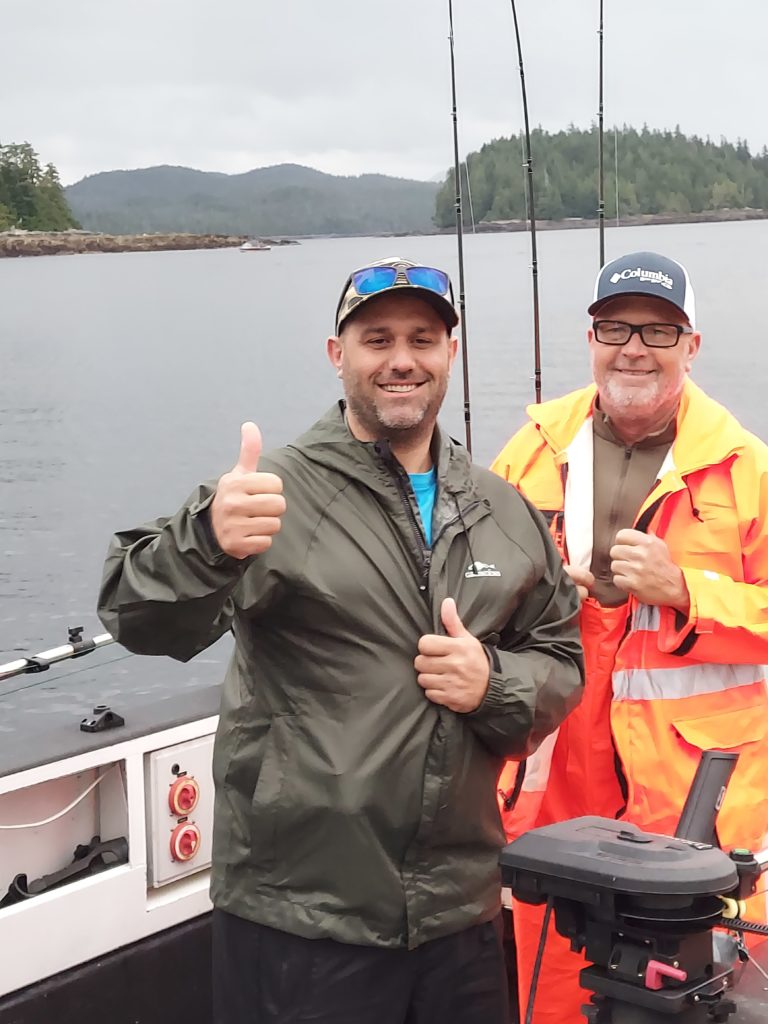
It’s been quite a ride for all involved. The emotions have been at high levels for the wounded vets who gathered for the trips. Houston said many of the stories he’s heard are not prudent to print, and while Purple Heart Anglers prides itself on the notions that “We don’t do politics and we don’t do therapy,” Houston embraces the importance of helping bring these brave men and women a sense of normalcy and peace after they sacrificed so much in battle.
“To see the vets up there enjoying the country that they served and protected, and being able to give them an opportunity to do that, (it’s special) to see the looks on their faces,” Houston said, also understanding that as the years have gone by he’s had to say painful goodbyes. “On the way back I was talking to one of our volunteers and I looked up the photos that I’ve got from the past, and we’ve probably lost 10 (people) who have passed away.”
But for many of them, this Alaska trip and all the other fishing and hunting adventures have provided memories for everyone who participated in or helped pave the way for the excursions.
Houston is based in the Bay Area coastal community of Half Moon Bay, but he plans to relocate to Oregon soon. Still, there are plenty of California fishing and hunting trips on the horizon, and Purple Heart Anglers’ annual fundraising crab feed is set for Nov. 6 in the Sacramento suburb of Carmichael.
“To see them, it gives me personally a sense of satisfaction, saying thank you for what they’ve done and also what they’ve done for me and my family,” Houston said. “All of the stuff that they went through to be of service to me. And to be able to stand there and catch fish was something I won’t forget … I’m proud of the people who are involved with (Purple Heart Anglers). It’s just an amazing thing to watch.”
-Chris Cocoles

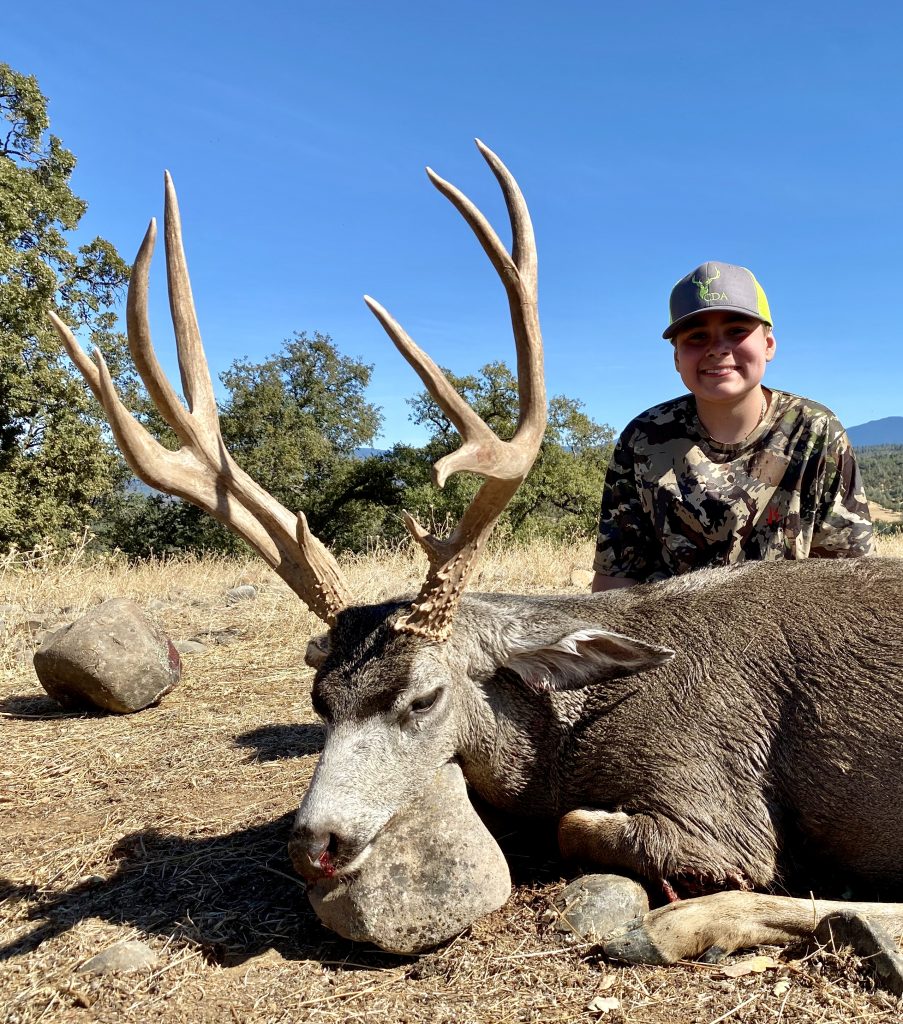 (
(

